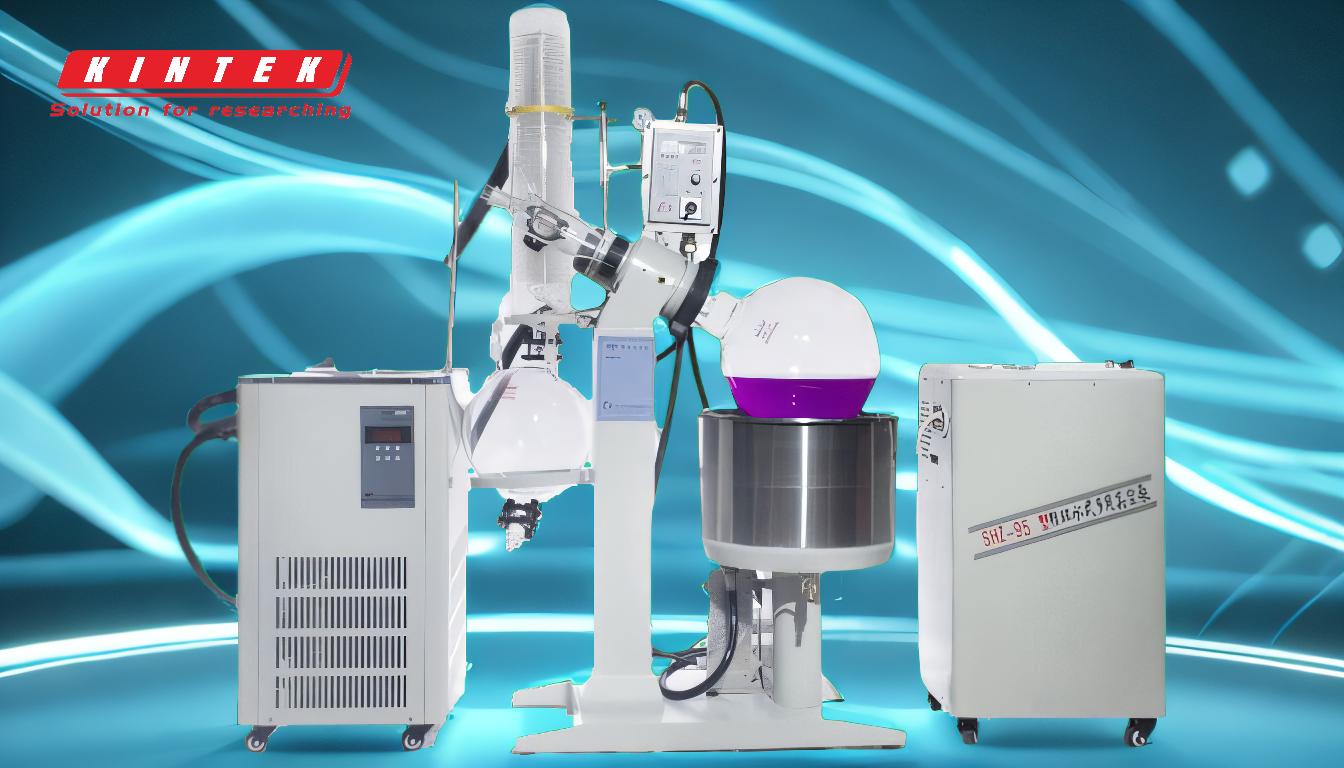Rotary evaporators (RotoVaps) are essential tools in laboratories for solvent removal, but knowing when to stop the process is critical for safety, efficiency, and preserving the integrity of your sample. The decision to stop a RotoVap depends on several factors, including the volume of solvent remaining, the boiling point of the solvent, the stability of your sample, and the desired dryness level. Properly stopping the RotoVap also involves following safety protocols to prevent damage to the equipment and avoid exposure to hazardous materials. Below, we’ll explore the key considerations and steps to determine when and how to stop a RotoVap.
Key Points Explained:

-
Monitor the Solvent Volume and Evaporation Rate:
- Explanation: The primary purpose of a RotoVap is to remove solvents. You should stop the process when the solvent volume is significantly reduced, and the evaporation rate slows down noticeably. This can be observed visually by checking the round-bottom flask or by monitoring the collection flask.
- Practical Tip: If the solvent level in the collection flask stops increasing or the condensation in the condenser slows, it’s a good indicator that most of the solvent has been removed.
-
Check the Boiling Point of the Solvent:
- Explanation: Different solvents have different boiling points, which affect how quickly they evaporate. Adjust the water bath temperature to be slightly below the solvent’s boiling point. Once the solvent is nearly gone, further evaporation may require higher temperatures, which could risk damaging your sample.
- Practical Tip: Use a thermometer to monitor the water bath temperature and ensure it remains within the safe range for your solvent.
-
Assess Sample Stability:
- Explanation: Some samples are sensitive to heat or prolonged exposure to vacuum. Over-evaporating can degrade or decompose your sample. Stop the RotoVap if you notice changes in the sample’s appearance (e.g., discoloration, crystallization, or foaming).
- Practical Tip: If you’re unsure about the stability of your sample, consult the literature or conduct a small-scale test before proceeding.
-
Desired Dryness Level:
- Explanation: The decision to stop the RotoVap also depends on how dry you need your sample to be. For some applications, trace amounts of solvent are acceptable, while others require complete dryness.
- Practical Tip: If complete dryness is required, consider switching to a secondary drying method (e.g., vacuum desiccation or lyophilization) after the bulk solvent has been removed.
-
Safety Considerations:
- Explanation: Safety is paramount when using a RotoVap. Stop the process immediately if you notice any leaks, unusual noises, or signs of equipment malfunction. Additionally, ensure that toxic or corrosive solvents are properly trapped and vented.
- Practical Tip: Use secondary traps (e.g., liquid nitrogen or dry-ice condensers) for volatile or hazardous solvents. Always work in a fume hood when handling toxic materials.
-
Release the Vacuum and Stop Rotation:
- Explanation: Once you’ve determined that the evaporation is complete, release the vacuum gradually to avoid sudden pressure changes that could damage the equipment or cause splashing. Stop the rotation of the flask to prevent unnecessary wear on the motor.
- Practical Tip: Use the stopcock to vent the system slowly before turning off the vacuum pump.
-
Clean and Maintain the Equipment:
- Explanation: After stopping the RotoVap, clean the glassware, empty the solvent collection flask, and inspect the equipment for any signs of wear or damage. Proper maintenance ensures the longevity of the RotoVap and prevents contamination in future runs.
- Practical Tip: Always apply vacuum grease to the grinding surfaces to maintain a proper seal and prevent leaks.
-
Energy Efficiency and Lab Etiquette:
- Explanation: While it’s not necessary to turn off the RotoVap between runs, doing so at the end of the lab period saves energy and reduces wear on the equipment.
- Practical Tip: Unplug the RotoVap and ensure all switches are turned off before leaving the lab.
By carefully monitoring the solvent volume, evaporation rate, and sample stability, and by following safety and maintenance protocols, you can determine the optimal time to stop a RotoVap. This ensures efficient operation, preserves your sample, and maintains the integrity of the equipment.
Summary Table:
| Key Factor | Explanation | Practical Tip |
|---|---|---|
| Solvent Volume & Evaporation Rate | Stop when solvent volume is low and evaporation slows. | Monitor the collection flask or condensation rate. |
| Boiling Point of Solvent | Adjust water bath temperature below the solvent’s boiling point. | Use a thermometer to ensure safe temperature ranges. |
| Sample Stability | Stop if sample shows discoloration, crystallization, or foaming. | Test sample stability beforehand or consult literature. |
| Desired Dryness Level | Stop based on required dryness; switch to secondary drying if needed. | Use vacuum desiccation or lyophilization for complete dryness. |
| Safety Considerations | Stop immediately if leaks, noises, or malfunctions occur. | Use secondary traps and work in a fume hood for hazardous solvents. |
| Release Vacuum & Stop Rotation | Gradually release vacuum and stop rotation to prevent damage. | Vent the system slowly using the stopcock before turning off the vacuum pump. |
| Clean & Maintain Equipment | Clean glassware and inspect for wear after use. | Apply vacuum grease to grinding surfaces to maintain a proper seal. |
| Energy Efficiency | Turn off the RotoVap at the end of the lab period to save energy. | Unplug the RotoVap and ensure all switches are off before leaving. |
Need help optimizing your rotary evaporator process? Contact our experts today for personalized advice!














